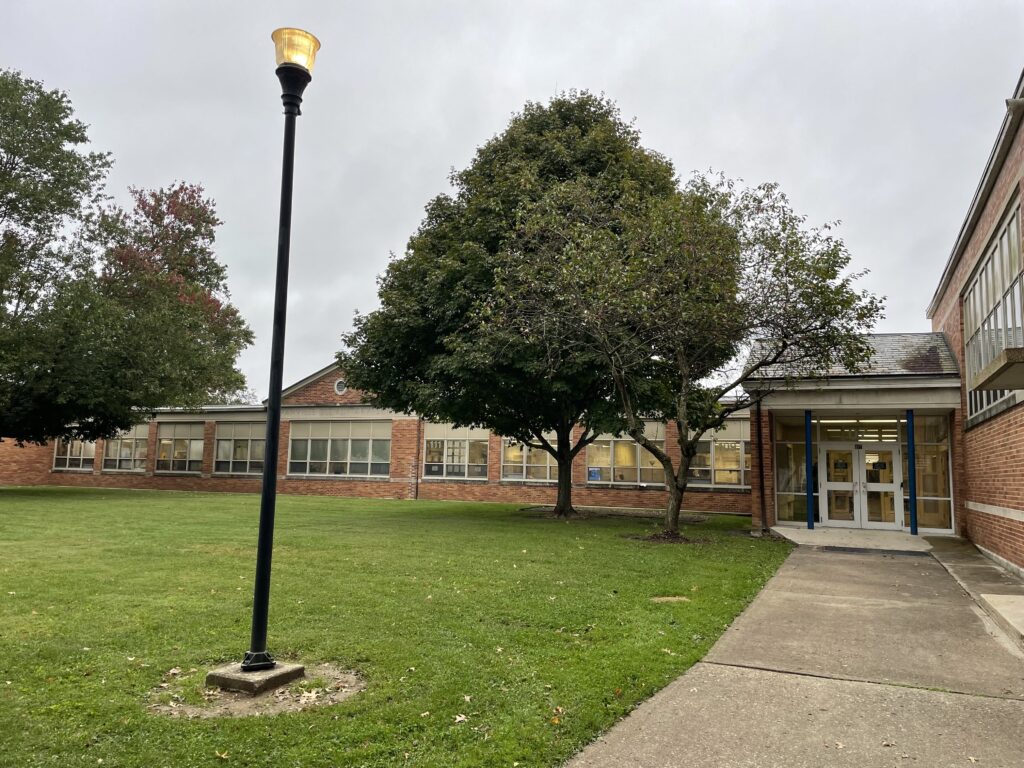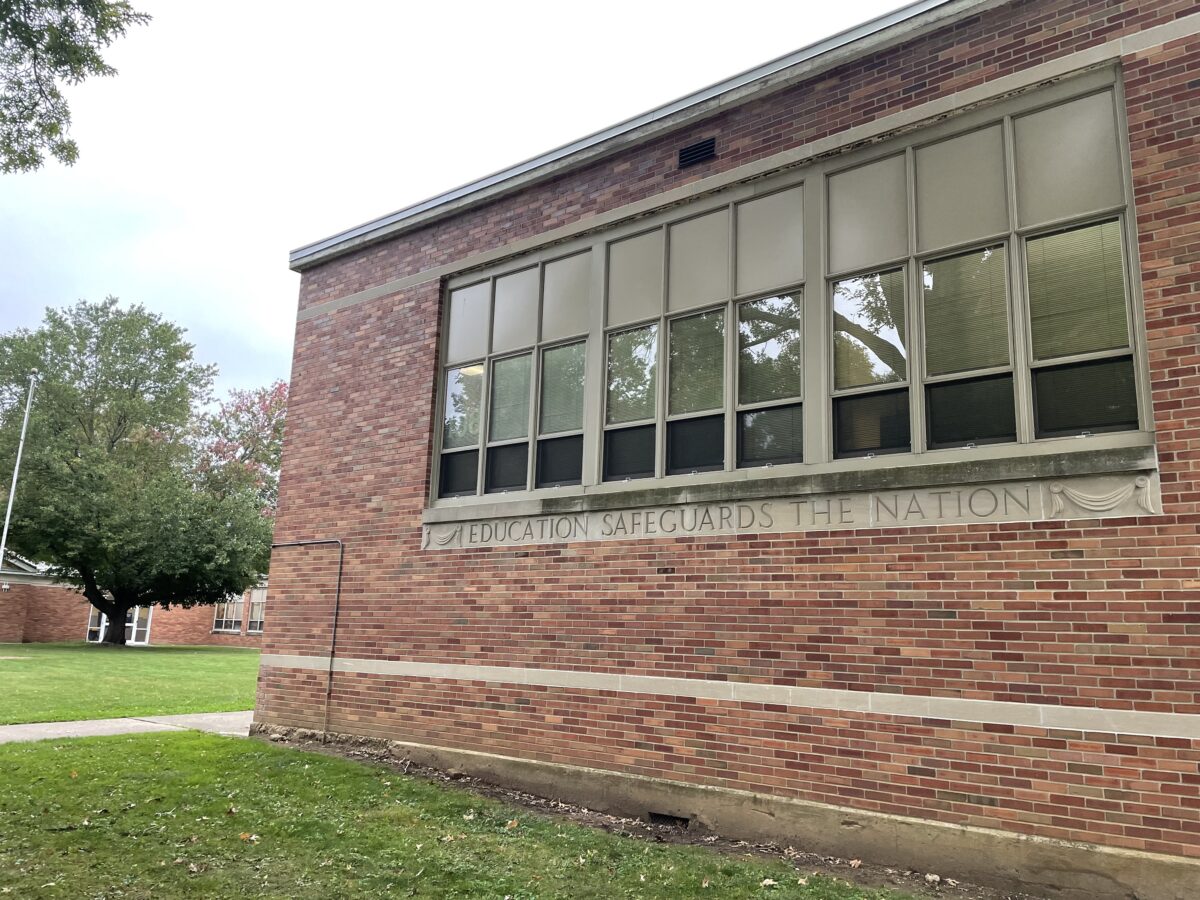As Granville Schools Superintendent Jeff Brown and Treasurer Brittany Treolo met recently with members of the Granville Area Chamber of Commerce’s relatively new economic development committee, one thing became clear: School officials and land developers are going to sink or swim together.
And increasing the commercial tax base to help pay for new schools is vital to success, according to a report presented during the meeting on Oct. 26.
“We believe it’s very important that we better diversify our tax base here in the Granville area. It’s heavily inflated toward residential currently. On a sustainability, long-term basis, that’s not particularly healthy,” said Steve Matheny, executive director of the Chamber of Commerce.

As Intel builds its $20 billion computer chip factory 10 miles west of Granville, the company has estimated hiring 3,000 full-time jobs and up to 7,000 construction workers. With these high-paying, skilled jobs will come families looking for good school districts for their kids. Being just a few minutes down the road, Granville is an obvious choice, say Granville leaders.
There’s a problem, though. The housing market is already tight in Licking County. An influx of jobs means a need for more housing construction. But more houses will bring more students for Granville schools, which already are struggling with capacity at the elementary and intermediate schools.
Though nothing is decided yet, new school buildings and shifting grade levels within current buildings appear inevitable in the coming years. While some residents might balk at the idea of a second elementary school, those students still would all come together as Blue Aces in high school. The real fear in the community, Brown indicated, is that building a second high school would divide the district by creating rivals within the community.
“I will tell you one guarantee,” Brown said. “I won’t be building a (second) high school. Somebody in the future might, but this guy is not doing it.”
Brown said that building an elementary school would cost around $20 million, a middle school would cost $45-50 million, and a new high school would cost upward of $90 million. Because the commercial tax base in Granville is relatively small, individuals and homeowners pay a larger proportion of the cost for schools through local property and income taxes. The projected cost of new buildings is significant and one that residents of single-family housing might not be able to meet.
A report by consultant Jim Lenner, the former Johnstown village manager who worked on a study with the Granville Area Chamber of Commerce, found that the cost to educate a student in Fiscal Year 2021 was $13,295. And the real-estate tax generated per student in the high-end Bryn Du Woods neighborhood is $8,136.
The Chamber of Commerce is working with Granville village and township officials to figure out how to bring a larger commercial tax base to the community in a way that is reasonable and appropriate for residents. That work falls largely to the Chamber’s Economic Development Committee, which is made up of nearly 20 community stakeholders. The committee formed in January 2021, and its attention is now centered around Intel.
“There’s probably a lot of folks who don’t want to see things change,” Matheny said, talking about the need for more commercial businesses in the Granville school district. “We like things here. But the reality is, we need to plan for the future but we don’t really control it.”
Significantly more people leave Granville to go to work each day than enter Granville to work. The net change is negative 868, according to Lenner’s report.
To address the lack of commercial property in the district, Lenner recommends the formation of a community improvement corporation (CIC) to encourage economic development in the greater Granville area. This CIC would employ full-time employees, because no one at the Chamber of Commerce or its economic development committee is able to work full time on attracting commercial development.
Matheny views the economic development committee as moving out of its initial planning phase and into new territory. As more significant plans get underway, Granville Schools will keep a seat at the table.
“They clearly have a vested interest in it,” Matheny said. “Our schools are among the highest rated in the state, and that’s a major draw and attraction. It’s also a magnet for people to want to come and live in Granville. But with growth, they have to be planful about it. With an announcement like we’ve had with Intel, the area is destined to change.”
Superintendent Brown is no stranger to significant school-district growth. He served as superintendent of Olentangy Local School District from 2000 until 2010, during which the district was growing rapidly and building new school buildings with regularity. In Olentangy, Brown had to negotiate with the municipality to get some breathing room for the school district.
“We worked with municipalities and said, ‘You need to slow down on building permits to let us catch up. Or else you’re going to have kids in trailers and modules everywhere,’” he said.
At Olentangy, Brown also worked with developers to acquire land for new school buildings. Developers could benefit by having a school in or near their developments, and the school district obtained free land needed for new buildings. Similar collaboration will be key for Granville’s success in the future.
The Village of Granville may look different in a few decades, but with careful planning and managed growth, officials said the school district can maintain its status as a cornerstone of the community.
Aaron Skubby writes for TheReportingProject.org, the nonprofit news organization of the Denison University Journalism Program, which is funded in part by The Mellon Foundation.

